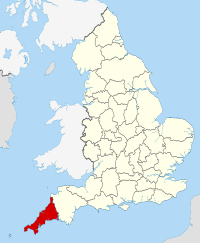Text from Wikipedia - the free encyclopaedia,
unless otherwise stated.
English: Advertisement for The North Star Train.
Français : Affiche du train Étoile du Nord (North Star).
Source: Own work.
This File: 14 November 2010.
User: Clicsouris
Author: Not known.
(Wikimedia Commons)
Deco emerged from the Inter-War Period when rapid industrialisation was transforming culture. One of its major attributes is an embrace of technology. This distinguishes Deco from the organic motifs favoured by its predecessor, Art Nouveau.

The Chrysler Building is an Art Deco-style Skyscraper,
which was completed in 1930, in New York, United States of America.
Creator: Carol M. Highsmith. 1946. Photographer.
Date Created/Published: 16 September 2007.
Repository: Library of Congress Prints and Photographs Division
Washington, D.C. 20540 USA http://hdl.loc.gov/loc.pnp/pp.print
Credit: Carol M. Highsmith's America, Library of Congress,
Prints and Photographs Division.
(Wikimedia Commons)

English: Adolphe Jean-Marie Mouron
(pseudonym "Cassandre")
(1901-1968).
Русский: А.М. Кассандр (1901 — 1968) - французский живописец, литограф, мастер рекламных плакатов и дизайнер шрифта.
Date: Pre-1940.
Author: Unknown.
(Wikimedia Commons)
Cassandre, pseudonym of Adolphe Jean-Marie Mouron (24 January 1901 – 17 June 1968) was a Ukrainian-French Painter, Commercial Poster Artist, and Typeface Designer.
He was born Adolphe Jean-Marie Mouron in Kharkiv, Ukraine, to French parents. As a young man, Cassandre moved to Paris, where he studied at the École des Beaux-Arts and at the Académie Julian. The popularity of Posters as advertising afforded him an opportunity to work for a Parisian Printing House. Inspired by Cubism, as well as Surrealism, he earned a reputation with works such as Bûcheron (Woodcutter), a Poster created for a Cabinet-Maker that won First Prize at the 1925 Exposition Internationale des Arts Décoratifs et Industriels Modernes.
Cassandre became successful enough that, with the help of partners, he was able to set up his own Advertising Agency, called Alliance Graphique, serving a wide variety of clients during the 1930s. He is perhaps best known for his Posters advertising travel, for clients such as the Compagnie Internationale des Wagons-Lits.
His creations for the Dubonnet Wine Company were among the first Posters designed in a manner that allowed them to be seen by occupants in moving vehicles. His Posters are memorable for their innovative graphic solutions and their frequent denotations to such Painters as Max Ernst and Pablo Picasso. In addition, he taught Graphic Design at the École des Arts Décoratifs and then at the École d'Art Graphique.
With Typography an important part of Poster Design, the Company created several new Typeface Styles. Cassandre developed Bifur in 1929, the Sans Serif Acier Noir in 1935, and, in 1937, an all-purpose Font called Peignot. In 1936, his works were exhibited at the Museum of Modern Art, in New York City, which led to commissions from Harper's Bazaar to do Cover Designs.

Bluebird Sparton Radio.
1936.
Designed by Walter Dorwin Teague
in Blue Mirrored Glass, Chrome and Ebonised Wood.
Illustration: PHIL'S OLD RADIOS
Poster for Century of Progress World's Fair in Chicago, Illinois,
in 1933, showing Exhibition Buildings with Boats on Water.
Date: 1933.
This image is available from the United States Library of Congress's
Prints and Photographs Division under the Digital ID cph.3q11941.
Author: Weimer Pursell, silkscreen print by Neely Printing Co., Chicago.
(Wikimedia Commons)

The De La Warr Pavilion, Bexhill-on-Sea, Sussex, England.
Built: 1935.
Designed by architects Erich Mendelsohn and Serge Chermayeff.
Photo: 20 January 2006.
Source: Own work.
Author: Marta Gutowska.
(Wikimedia Commons)
Spiral Staircase of The De La Warr Pavilion, Bexhill, East Sussex, England.
Photo: 27 June 2007.
Author: DAVID DAWSON
(Wikimedia Commons)

Self-Portrait.
Depicting the all-confident "modern" woman
at the controls of her Green Bugatti.
1925.
Illustration: KING AND MCGAW




































